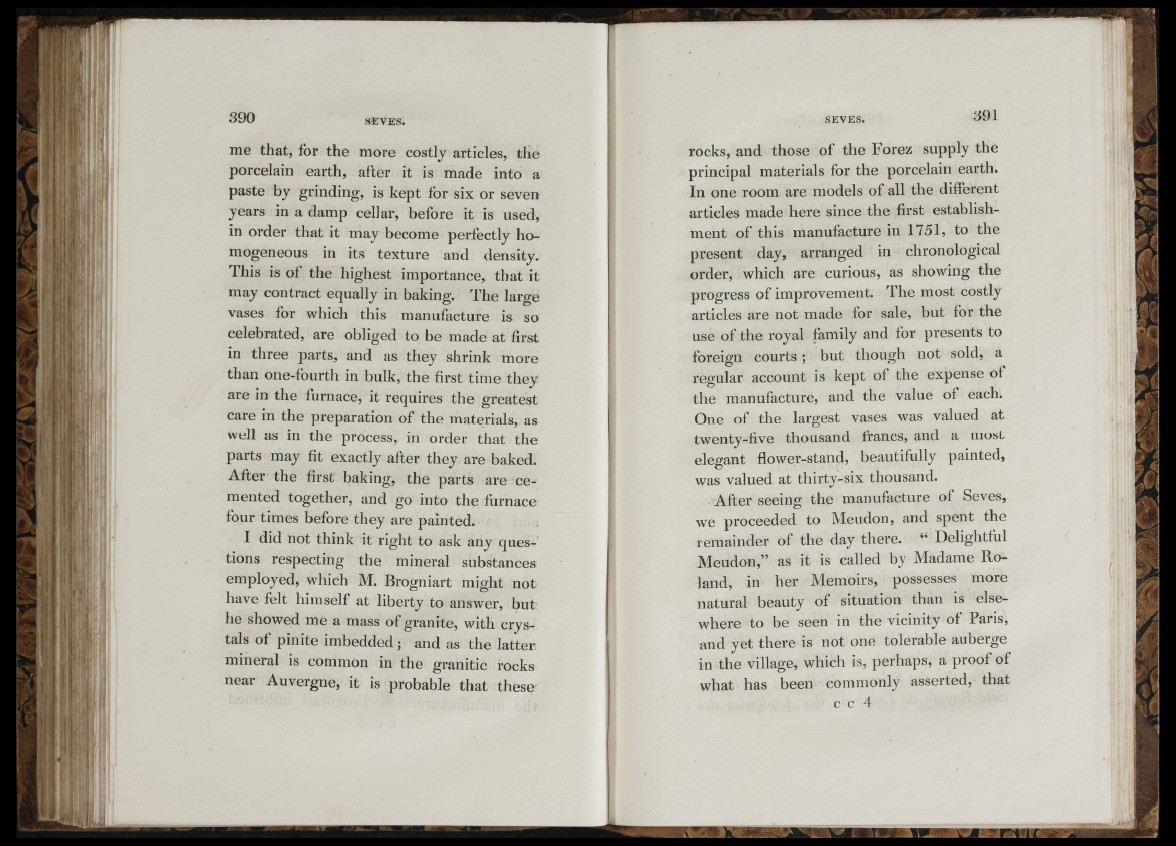
fá
k l :
j i
'ib
-jui I
S|
i ‘frf*
i fi ;
'-Ï
]!:
:í
ii í .
‘T I - ,
:iSí. 4(i|
AM '
t■ ; V: i!
I ♦ •
?
ÍV.V
me that, for the more costly articles, the
porcelain earth, after it is made into a
paste by grinding, is kept for six or seven
years in a damp cellar, before it is used,
in order that it may become perfectly homogeneous
in its texture and density.
This is of the highest importance, that it
may contract equally in baking. The large
vases for which this manufacture is so
celebrated, are obliged to be made at first
in three parts, and as they shrink more
than one-fourth in bulk, the first time they
are in the furnace, it requires the greatest
care in the preparation of the materials, as
well as in the process, in order that the
parts may fit exactly after they are baked.
After the first baking, the parts are cemented
together, and go into the furnace
four times before they are painted.
I did not think it right to ask any questions
respecting the mineral substances
employed, which M. Brogniart might not
have felt himself at liberty to answer, but
he showed me a mass of granite, with crystals
of pinite imbedded ; and as the latter
mineral is common in the granitic rocks
near Auvergne, it is probable that these
rocks, and those of the Forez supply the
principal materials for the porcelain earth.
In one room are models of all the different
articles made here since the first establishment
of this manufacture in 1751, to the
present day, arranged in chronological
order, which are curious, as showing the
progress of improvement. The most costly
articles are not made for sale, but for the
use of the royal family and for presents to
foreign courts ; but though not sold, a
regular account is kept of the expense of
the manufacture, and the value of each.
One of the largest vases was valued at
twenty-five thousand francs, and a most
elegant flower-stand, beautifully painted,
was valued at thirty-six thousand.
After seeing the manufacture of Seves,
we proceeded to Meudon, and spent the
remainder of the day there. “ Delightful
Meudon,” as it is called by Madame Roland,
in her Memoirs, possesses more
natural beauty of situation than is elsewhere
to be seen in the vicinity of Paris,
and yet there is not one tolerable auberge
in the village, which is, perhaps, a proof of
what has been commonly asserted, that
O T